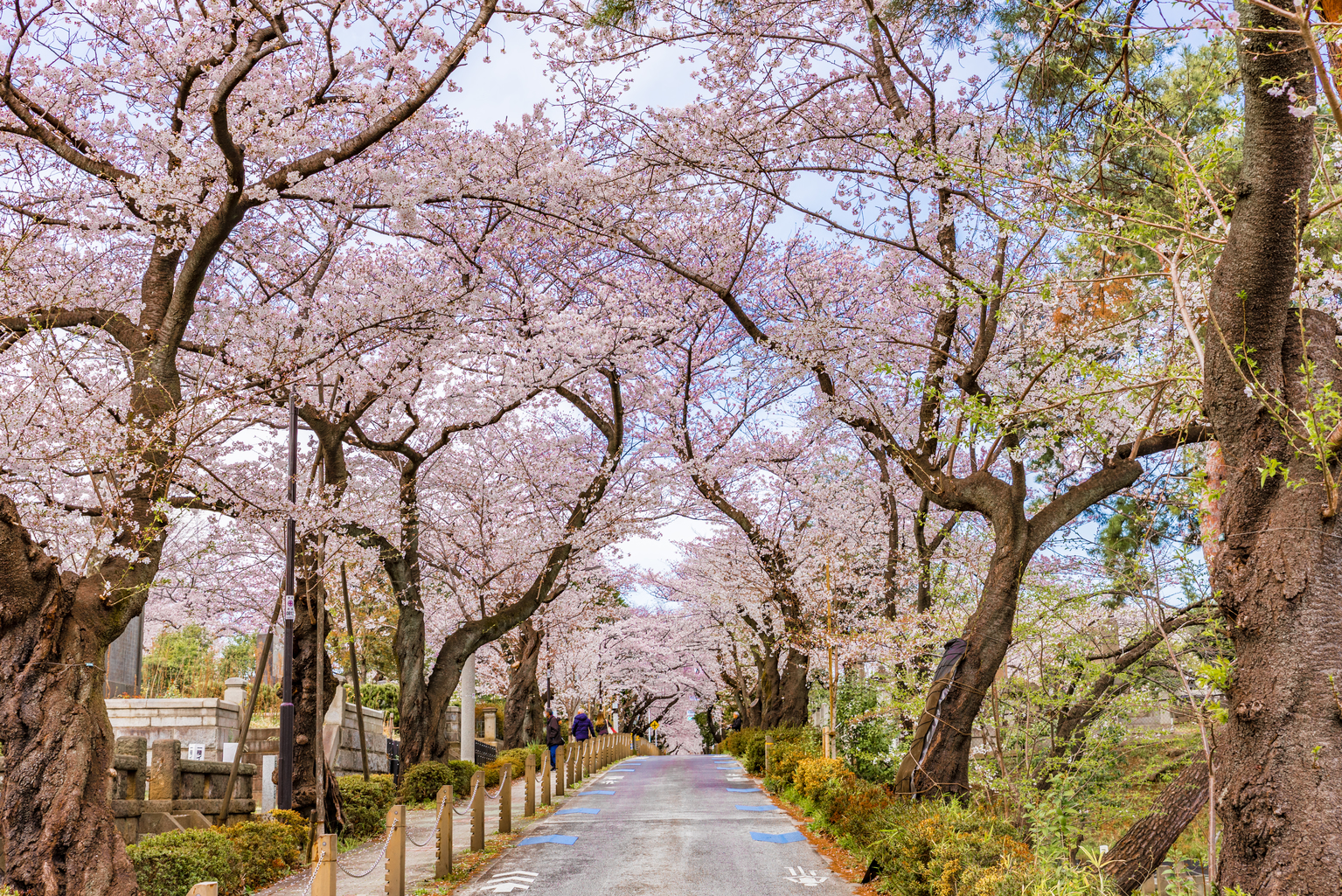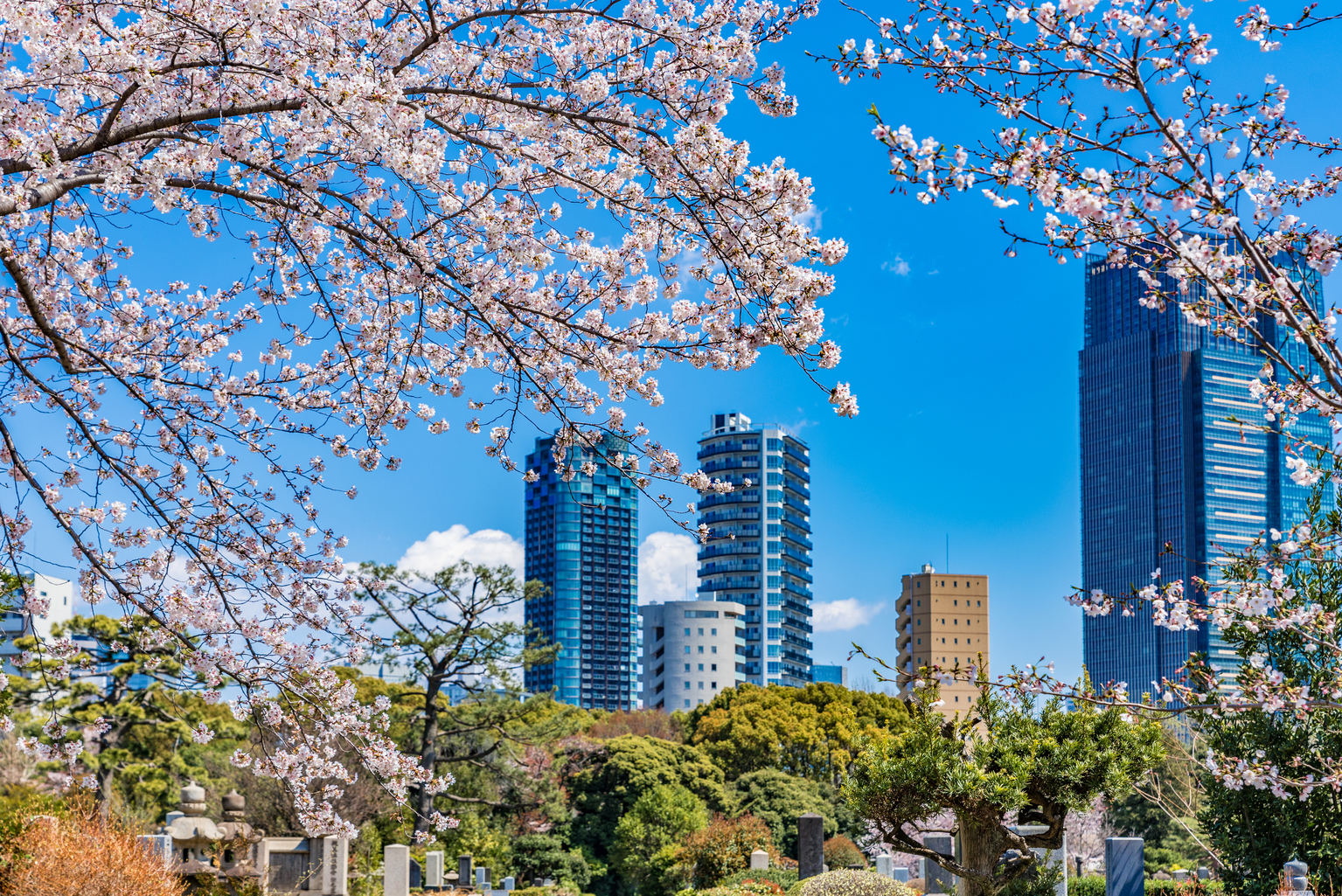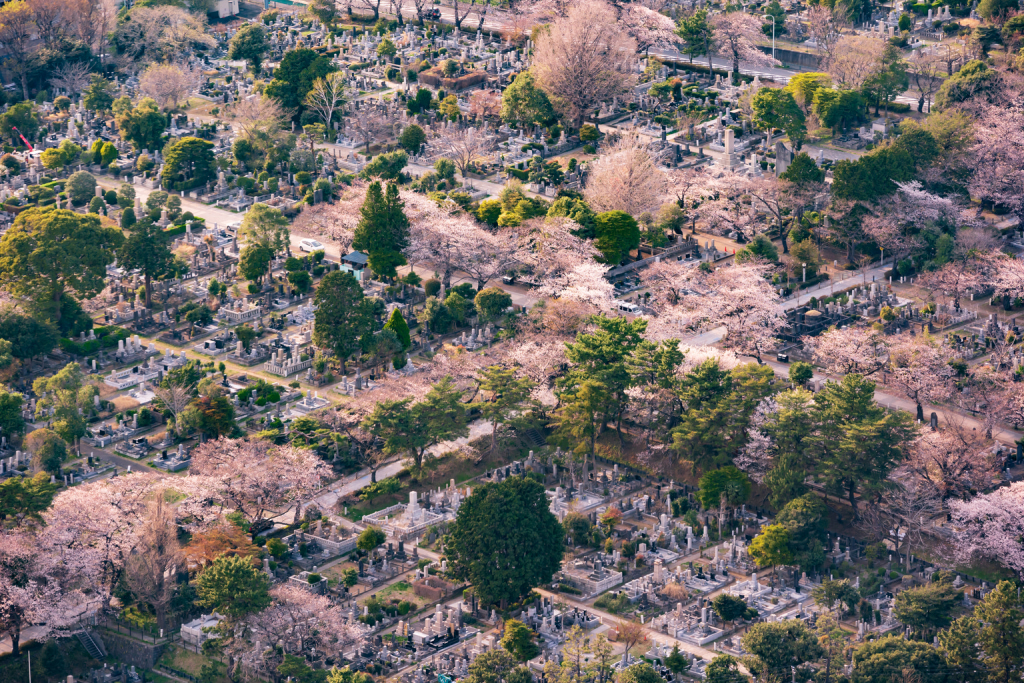Aoyama Cemetery forms an island of tranquility in the heart of the world’s largest metropolis. And during the height of cherry blossom season it overflows with ephemeral beauty. A central avenue spanning almost 800 meters in length is flanked by an uninterrupted procession of sakura trees, providing visitors with a walk to remember.
Cherry blossoms are fleeting, like life itself, so where better to appreciate their transient descent? Many people flock to Aoyama Cemetery in spring, to admire the sakura blossoms. At the same time, one must respect this quiet final resting place and its long history. So, here’s some background on Tokyo’s oldest cemetery.

Photo by Takashi Images (Shutterstock)
Past and Present of Aoyama Cemetery
Aoyama was originally a burial site exclusively for the Japanese nobility at the beginning of the Meiji Period, its name derived from the Aoyama family of the Gujo clan. But by 1874 it had been transformed into Japan’s first public cemetery.
Nowadays the land is surrounded by some of the most expensive neighborhoods in the capital. It’s 10 minutes on foot from Nogizaka Station, nine minutes from Aoyama-Itchome Station and seven minutes from Gaienmae Station. The opulent skyscrapers of Roppongi and Akasaka are clearly visible, yet seem to be a world away from the calm and solemnity that one finds while passing through the gravestones. As the cemetery is situated on elevated ground, you can see into the distance of the city.

Photo by Takashi Images (Shutterstock)
Some of the most prominent historical figures of 19th and early 20th century Japan can be found in Aoyama Cemetery.
One is Toshimichi Okubo, a leading statesman who is regarded as one of the Three Great Nobles who crafted the modern Japanese state. At home, he helped suppress opposition to the Meiji Government. Abroad, he participated in the famous diplomatic Iwakura Mission to the US.
Other well-known names in Japan buried here are Osachi Hamaguchi and Colonel Baron Takeichi Nishi. Hamaguchi served as Japanese Prime Minister between 1929 and 1931, before succumbing to wounds sustained in an assassination attempt. Nishi was an army officer who won an equestrian gold medal at the 1932 Los Angeles Olympics. He was later killed in the Battle of Iwo Jima in 1945.
These are just a few of the many prominent Japanese people whose tombstones are in Aoyama Cemetery. There are also foreign people who called Japan home, passed away and are buried here too.

Photo by Takashi Images (Shutterstock)
Resting in Peace Far from Home
Aoyama has a substantial area of land dedicated to the graves of the many foreign residents of Japan. These are people who settled in the country during the Meiji Period to assist with the industrial and social development of a rapidly changing society.
Doctors, diplomats, engineers and university professors who traveled from Europe and North America are all buried in this section. This is called the “gaikokujin bochi” and there are similar sections in cemeteries in Yokohama, Kobe and Nagasaki, all port cities through which Japan first got into contact with the West.
Prominent foreigners buried in Aoyama Cemetery include Edoardo Chiossone. He was an Italian artist who designed the first Japanese banknotes and produced a striking portrait of Emperor Meiji in 1888. There’s also Henry Spencer Palmer, a former British military engineer who played an instrumental role in the expansion of Yokohama’s harbor.
In the gaikokujin bochi section rests also Francis Brinkley, an Irish scholar and journalist who wrote extensively on Japanese culture and art while residing in the country for more than four decades. Julius Scriba, a German surgeon who greatly assisted in the spread of Western medicine throughout Japan. And Joseph Heco, born Hikozo Hamada, the first Japanese person to become a naturalized citizen of the United States of America.

Professor Ueno’s grave. Photo by Edomura No Tokuzo, CC BY-SA 4.0 (Wikimedia Commons)
A Dog’s Afterlife
The story of the eternally loyal Akita named Hachiko, who waited for his master to return for nine years after his untimely death, requires no further elaboration. While Hachiko’s famous bronze statue is an internationally known landmark in Shibuya and his fur is displayed at the National Museum of Nature and Science, his grave lies in Aoyama Cemetery. He is buried next to Professor Hidesaburo Ueno, the owner he had been so patiently waiting for. It’s not uncommon to find offerings of chew toys and assorted canine treats left by those who remain touched by the old dog’s example.
Featured and top image by BaLL LunLa (Shutterstock)









